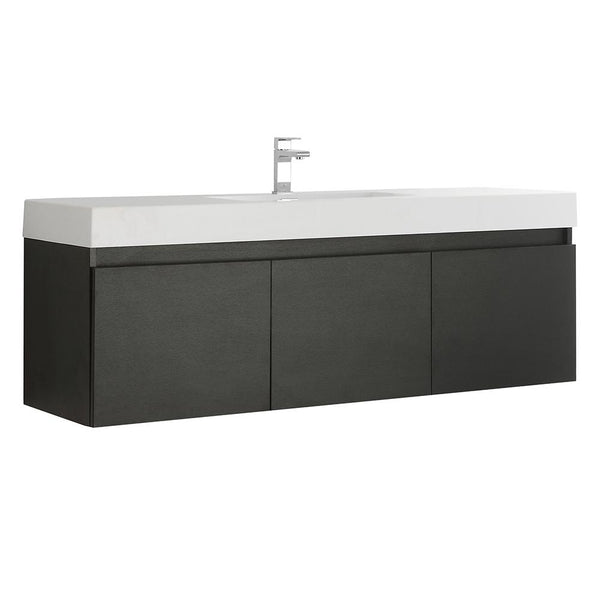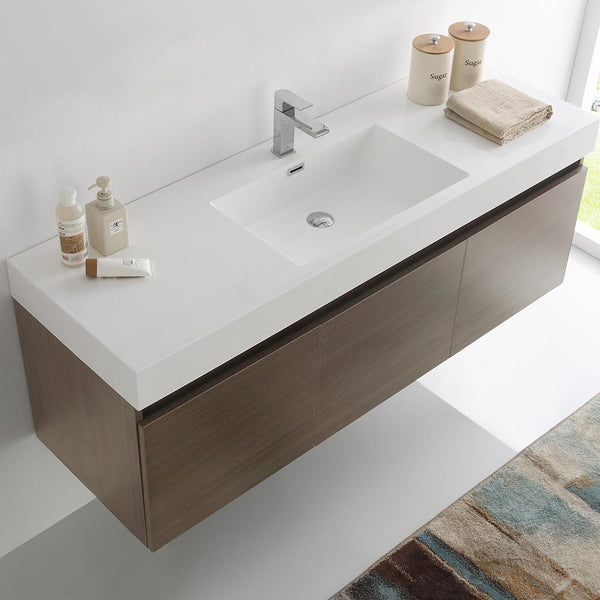If you've been browsing bathroom design ideas recently, chances are you've seen the chic, contemporary aesthetic of a wall hung bathroom vanity. These floating vanities have been appearing everywhere — in hip home renovations, hotel bathrooms, and Pinterest-famous makeovers. But the question on everyone's mind is: are they really worth it?
Here, we're going to discuss the advantages and disadvantages of a wall mounted bathroom vanity, and show you everything you need to consider before purchasing (or installing) one for yourself.
What Exactly Is a Wall Hung Bathroom Vanity?

A hung wall bathroom vanity — alternatively a wall mounted bathroom vanity or a floating vanity — is what the name describes: a vanity which is fitted onto the wall directly and isn't in contact with the floor.
Whereas a traditional vanity would rest on a base or legs, the entire thing hangs off the floor, creating a "floating" effect. This aesthetic is a top pick for contemporary bathrooms, particularly where sleek lines and space efficiency are priorities.
Confused about the difference? Here's a full breakdown: What’s the Difference Between a Floating Vanity and a Wall-Mounted Vanity.
The Advantages of a Wall Hung Vanity

So why are vanities so popular right now? Here are a few reasons why people adore them:
1. They Make Your Bathroom Appear Larger
Since they don't rest on the floor, wall hung vanities give the illusion of extra space. You have an unobstructed view across the floor, which immediately makes the room appear more open — particularly useful in small or narrow bathrooms.
2. They're Easy to Clean Around
Since there are no legs or toe-kicks to catch dust and hair, the bathroom floor is easy to clean. Simply swish a mop or vacuum under it and it's finished.
3. You Can Adjust the Height
In contrast to traditional vanities that have a fixed height, you are able to install a floating vanity at the height that is ideal for you. This is a wonderful benefit for tall individuals, children's bathrooms, or even wheelchair-accessible designs.
4. Contemporary, Sleek Look
There's no disputing it — wall hung bathroom vanities simply look nice. Simple lines, floating profiles, and sleek finishes make them a design star for contemporary or minimalist areas.
The Downsides You Need to Consider First
As with any design element, there are some trade-offs you should consider:
1. They Require Strong Wall Support
Since you're going to be hanging something heavy (and possibly full of stuff), your wall needs to be powerful enough to support it. You need a stud or a braced wall. This may increase expense or difficulty, particularly in older buildings.
2. Limited Storage Space
Most floating vanities are skinnier or have fewer drawers than their clunky, floor-standing relatives. If you're a bit lacking in bathroom storage space to start with, this may be an issue — although some do include intelligent drawer configurations or open shelving.
3. Installation Can Be Tricky
Getting a vanity installed properly isn't something to do on the side. If it's not properly installed, it may not be level or safe. Which brings us to...
Read this blog post also: Vanity Installation Gone Wrong: Common Mistakes and How to Fix Them
How to Hang a Floating Vanity (The Right Way)
Pondering taking the DIY approach? Here's a quick summary of how to hang floating vanity units:
-
Find and Mark Your Studs: Where your vanity will find its anchor of support. No studs = no dice.
-
Measure and Level: With a spirit level, double-check that your vanity won't slope forward or to the side. Believe us — you'll feel even the smallest slant.
-
Mount the Brackets: The majority of vanities include wall cleats or brackets. These must be screwed into the studs.
-
Secure the Vanity: Pick up and install the vanity on the brackets. Ensure it's secure and tightens all screws.
-
Connect Plumbing: Reconnect the drain, faucet, and sink — you may need to use an S-trap or P-trap based on your configuration.
If this all seems daunting, it's alright to hire a pro. You need your vanity sturdy, level, and prepared for everyday use.
Is a Wall Mounted Bathroom Vanity Right for You?
So, is it worth it? Here's how to know:
Go for it if... you're looking for a sleek, contemporary appearance, want to create the illusion of a larger bathroom, and don't have a problem with a little more installation effort.
Perhaps not if... your walls aren't sturdy enough, you require maximum storage space, or you like a more traditional, earthy look.
That being said, most folks love the wall hung bathroom vanity as a savvy and chic investment — particularly in powder rooms, contemporary master bathrooms, or city apartments where every inch matters.
Final Thoughts
A wall mounted bathroom vanity is not only a good-looking face — it's a useful, space-efficient solution that is effective in the right environment. It may not be for everybody, but it might be exactly what you need if you're looking to add some modern flair to your bathroom.
Just remember: it’s not only about looks. Think about your space, your storage needs, and whether you’re comfortable installing it yourself or hiring help. Knowing how to hang floating vanity units safely is key to making sure your new vanity is more than just stylish — it's rock solid, too.
Have questions about choosing or installing a wall-mounted vanity? Drop them in the comments or reach out — we’re happy to help!








